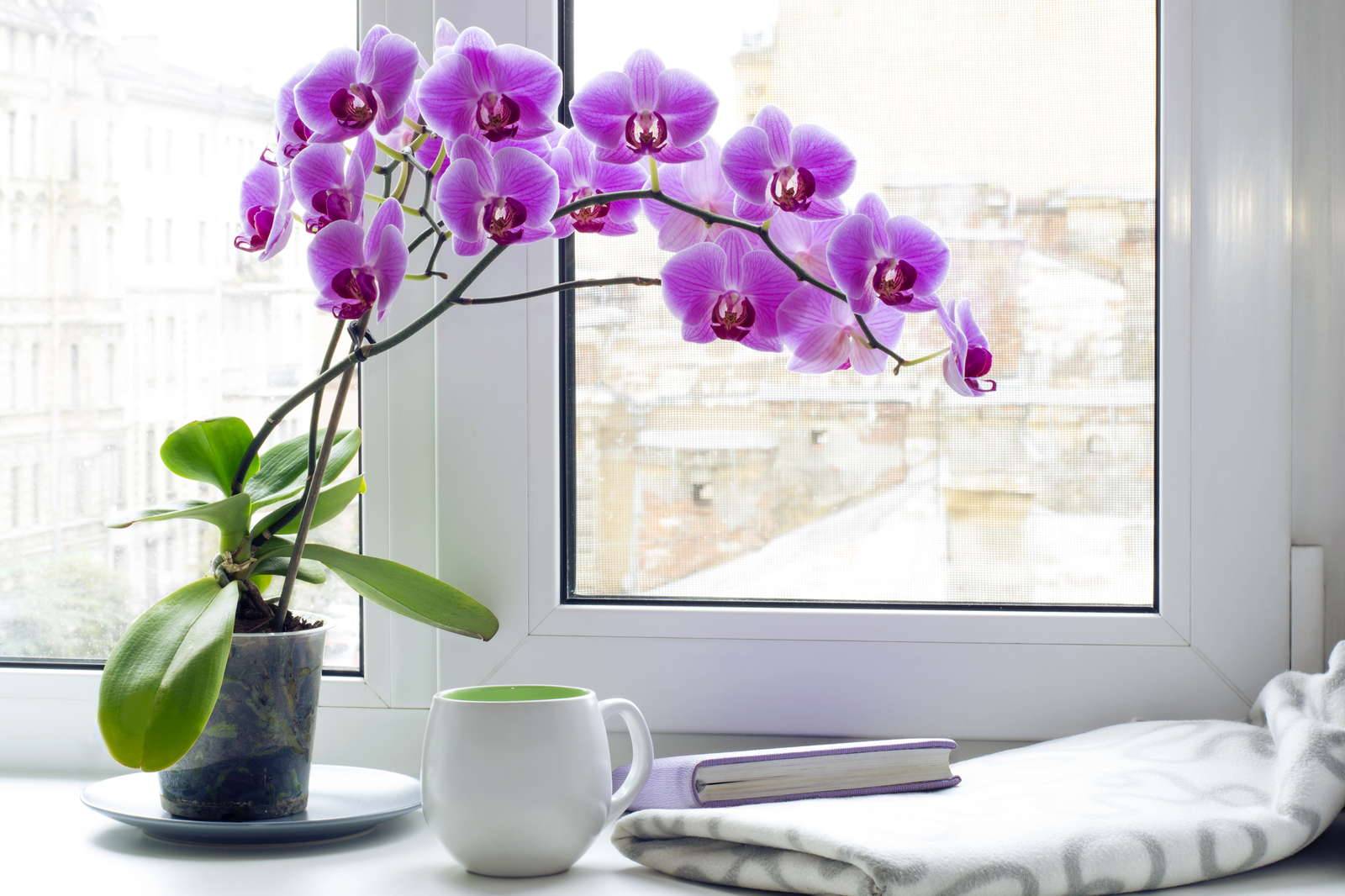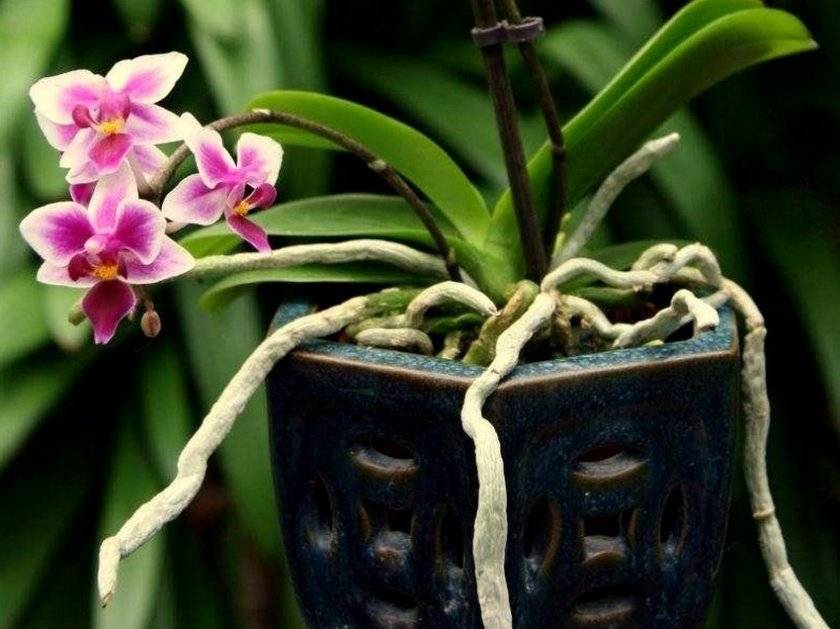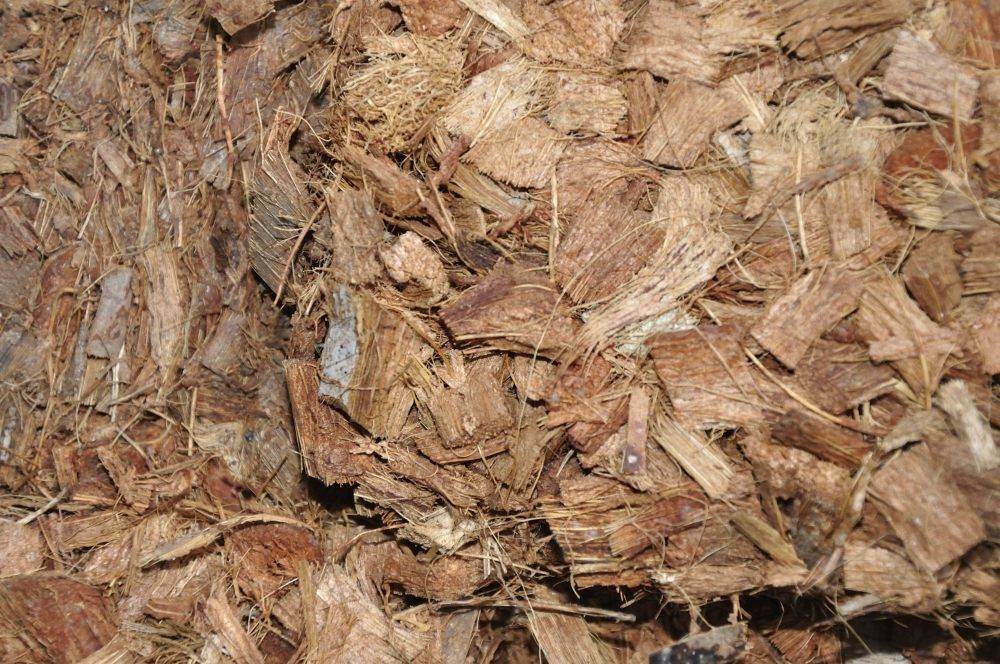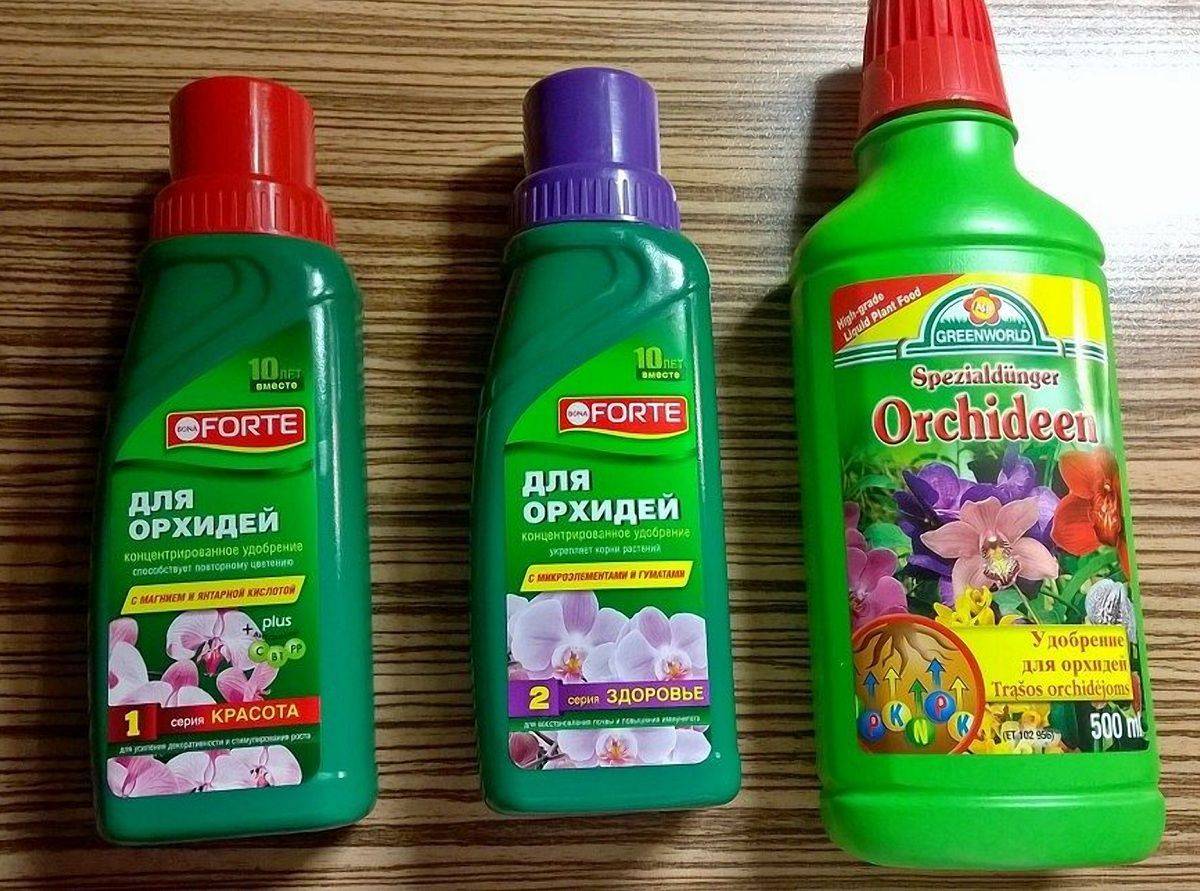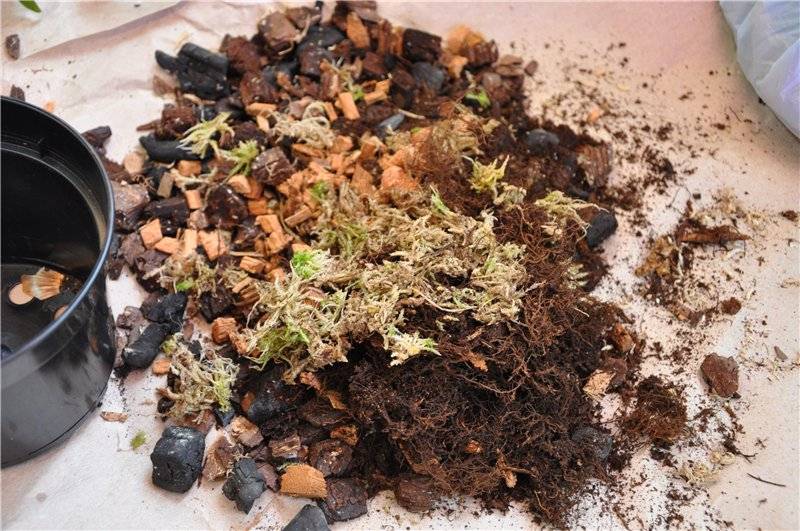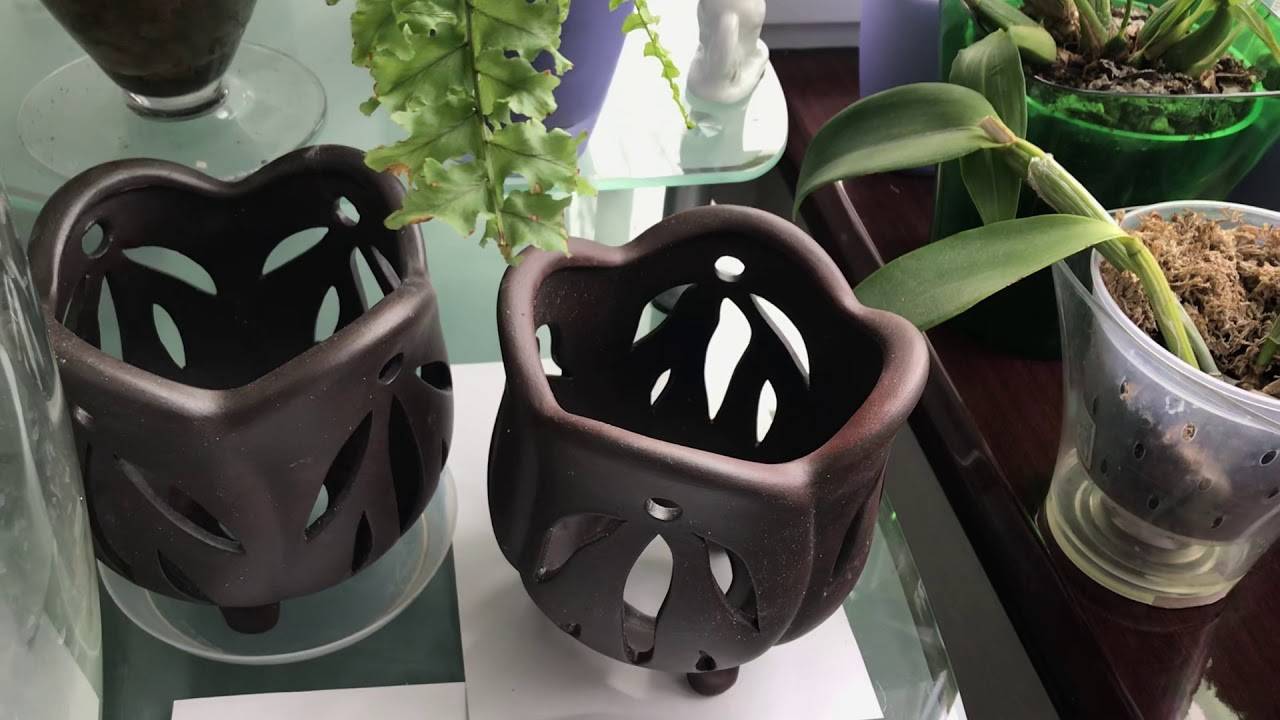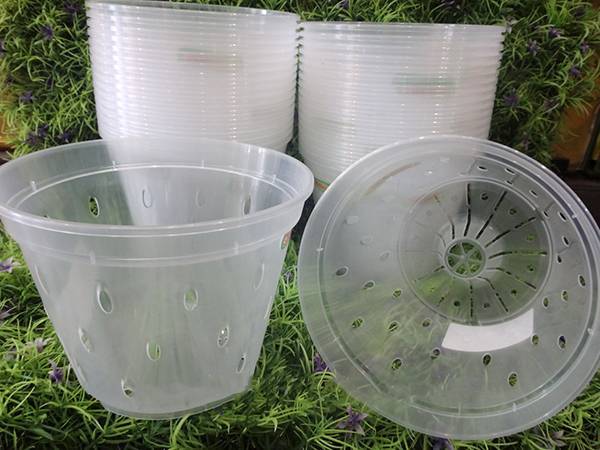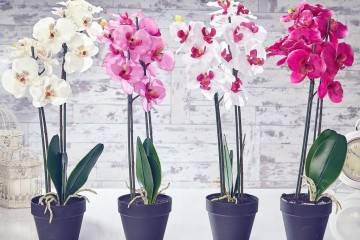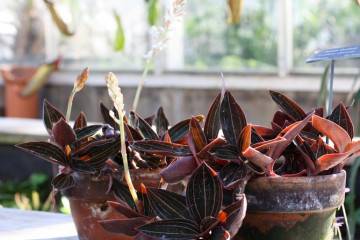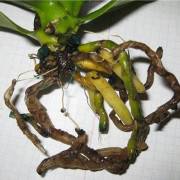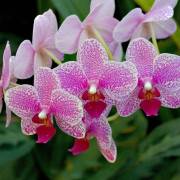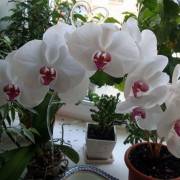Soil for orchids: soil requirements and options at home
Content:
The variety of orchids is several thousand species. However, under conditions of indoor cultivation, much less is cultivated, and all these plants are epiphytes, that is, in their natural habitat they live on other larger plants (usually tree trunks). Similar conditions have to be recreated at home so that orchids can survive, bloom and reproduce.
Requirements for the composition of the soil
In search of an answer to the question of what kind of soil is needed for an orchid, you need to understand that it does not need soil in the usual sense. In natural habitats, plants of this species are adapted to the intake of nutrients from symbionts. Mycorrhiza-forming fungi live on the bark of trees, supplying plants with mineral salts, water, and they instead release organic matter that feeds myceliums.
Mycotrophic orchids differ from others in that their leaves lack chlorophyll, so they survive by exclusively parasitizing on symbiont fungi. Epiphytes are easily recognizable by their numerous thick aerial roots, which lack hairs. The surface of the roots is covered with a special fabric - velamen, capable of absorbing everything that the orchid needs for life. Phalaenopsis have flattened green roots, and photosynthesis also occurs in them.
To prepare a substrate for an orchid, it is important to clarify its species and select high-quality components. They make up the composition independently, guided by the recommendations. Unfortunately, it is almost impossible to buy a 100% ready-made substrate, but its components are readily available in any garden store.
Bark
By the term "bark" it is customary to designate all the tissues of a tree on the outside of its cadmium. Bast is not included here. For orchids, mulch is used - small pieces of bark that can be pressed into blocks to grow flowers without a substrate. You can assemble a suitable material yourself or buy a ready-made one.
Orchidists recommend using the bark of coniferous trees: pine or spruce. Pine is better suited, but in its absence, a spruce is taken, in which there is more resin, the worse it is. The bark is cleaned from long-dead or cut down trees. It should flake off easily, which indicates that it does not contain excess resin (a nutrient medium for fungi). Insects in such a bark are no longer there, but there may be their larvae, so heat treatment is required.
Oak bark is almost not on sale. It is rich in nutrients, and the acidity level is lower than that of conifers. It is difficult to prepare such material on your own, it peels off with difficulty, but with a strong desire it is possible, this particular breed is quite suitable for orchids.
The bark of larch, thuja, cedar can theoretically be used, but it has a feature - a low rate of decomposition. Such material will release nutrients to the roots of orchids very slowly, which will cause a slow growth rate of flowers.
Coconut fiber
Coconut fiber is obtained from the shell of a nut. It is crushed, washed, dried and sterilized. Small particles are pressed into briquettes, chips are obtained from large ones, and part of the material remains in the form of long fibers.The advantage of coconut fiber is its neutral acid-base reaction, which is suitable for most plants, including orchids.
You can use a whole pressed coconut block to support orchid roots, or soak it and mix with other ingredients. Loose fibers fill the gaps in the substrate and have a valuable ability to absorb and retain moisture for a long time. Hence the disadvantage: together with water, the coconut retains salts, which over time change the moisture capacity of the substrate, its throughput and acidity.
Charcoal
A porous product with a high content of pure carbon is natural charcoal. It is obtained by a special method of burning wood. Charcoal is often added to substrates, as it serves as an excellent antiseptic for plant roots. You can buy it not only in garden stores, but also in ordinary supermarkets - in bags, it is produced specifically for barbecues.
In the composition of the substrate for orchids, charcoal accounts for no more than 10%. Only in this case it will not affect the acid-base balance. When performing orchid transplantation, crushed coal is sprinkled with all accidental injuries to the roots and trunk in order to prevent putrefactive processes.
Minerals
Minerals are not specially added to the orchid substrate. There are several reasons for this. Home: an excess of minerals can lead to the rapid death of plants. Therefore, mineral supplements are included only in fertilizers that are bought at the store.
They are usually produced in liquid form. They are used in the warm season in the proportion and with the frequency recommended by the manufacturer for each type of orchid popular in indoor floriculture.
Others
A variety of additives can be included in orchid soil. It is believed that the richer the list of ingredients, the closer the conditions recreated in the pot are to natural conditions. For example, you can add to the bark and coconut additionally:
- Horse peat - it has good moisture holding capacity while remaining airy. The disadvantage is high acidity, which can be straightened out. To do this, add dolomite flour at the rate of 10 g per 1 kg of peat. The mixture must be kept for 2 weeks before use.
- Polyfoam is an inert filler (can be replaced with foam glass). A piece of polystyrene is a traditional support used by flower growers for Phalaenopsis and Cattleya. It does not react when it comes into contact with the plant, it allows air and water to pass through, remaining light and chemically neutral.
- Vermiculite is one of the best leavening agents out there. It is introduced into the substrate so as not to allow it to clump and dry out too quickly. Vermiculite particles absorb 5 times more moisture than they themselves weigh, while lowering the acidity of the substrate and preventing salinization.
- Sphagnum moss is a natural additive that can absorb moisture from the air. Sphagnum contains many nutrients and microelements valuable for orchids that are absent in the bark. Pathogenic microbes and bacteria do not multiply in it.
- Cork is a good substitute for coconut and moss. It is difficult to find it on sale, but if you are lucky, you should definitely purchase it.
- Pine cones. In theory, they can be used together with bark, but in reality the material has several disadvantages: a high resin content and an unstable shape that changes with moisture.
- Expanded clay is a filler that has a serious drawback in comparison with vermiculite. Over time, expanded clay becomes highly saline and begins to affect the acidity of the substrate, therefore it is less often used in the preparation of soils for orchids. If it is used, it is placed on the bottom of the pot to prevent the roots from coming into contact with the irrigation water for longer than necessary.
On the market you can find bases that can be used to prepare the substrate, for example, "Orhiat".
Soil options for orchids - do it yourself composition
Which substrate for do-it-yourself orchids to choose depends on the conditions of plant maintenance, temperature and humidity in the room, as well as on the capabilities of the grower. Here are the most common formulations:
Option number 1 - for rooms with an air humidity of about 60%:
- pine bark - 5 parts;
- foam plastic - 1.5-2 parts;
- expanded clay - 1.5-2 parts;
- sphagnum and / or peat - 1 part;
- charcoal - 0.5 parts.
Option number 2 - for rooms with an air humidity of about 80%:
- bark - 9.5 parts;
- charcoal - 0.5 parts.
Option number 3 - for rooms with an air humidity of about 50%:
- pine bark - 5 parts;
- sphagnum - 2 parts;
- charcoal - 1 part.
Step by step cooking process:
- Sterilize all components of the mixture.
- Mix in the specified proportion.
- Pour the substrate into the planting pot without compacting.
- Place the roots freely on the surface, slightly sprinkling with bark.
- Water the plant by immersing the pot 2/3 in room temperature water.
At the end, you need to remove the pot from the water, let the excess moisture drain off and put it in a warm, sunny place without drafts.
Requirements for preparing soil at home
One of the most important requirements for an orchid substrate is its sterility. In the process of growing a flower in a pot, its own microflora inevitably settles, but it must be favorable for the plant. Therefore, all components of the substrate must be disinfected, as a rule, using conventional heat treatment - by calcining in the oven or scalding with boiling water.
Air humidity
All flowering indoor orchids are native to tropical rainforests. Therefore, in room conditions, they need to recreate the optimal environment - warm and humid. With air humidity below 60%, the appearance of the plant will suffer, and the buds may not bloom at all. The recommended minimum is 60%, and a comfortable environment has a humidity level of about 80%.
The soil
Orchid soil is not suitable for orchids and is never included in the prepared substrates. Orchid soil is needed only for terrestrial varieties, but they are not found in indoor floriculture.
Choosing an orchid pot
An orchid container is different from a pot for any other plant. The thing is that it is important for the roots to provide an unobstructed flow of air, without which the roots quickly die. They lose their natural greenish color, becoming gray, dry and brittle. Therefore, an ideal container has many large holes in the bottom and walls, and it must also transmit light.
Clay
Such dishes are poorly suited for orchids. It has some significant disadvantages. First of all, plant roots easily adhere to the inner porous surface. If you start to tear them off, for example, during a transplant, then their outer surface suffers, and then heals for a long time and painfully.
The second drawback is that there is no way to monitor what is happening inside with the roots and substrate. Opaque walls are an important disadvantage, practically negating the possible advantages.
Only flower growers with very extensive experience can afford to plant and grow orchids in ceramic pots. They can determine exactly what size a given plant needs drainage holes, the width and depth of the container to provide the required aeration and watering.
In order to remove salt stains from the surface of the ceramic, it is immersed in acidified water, kept for several hours, and then thoroughly washed without the use of detergents, which are easily absorbed into the porous walls.
The bottom of the pot and the walls must necessarily have very large drainage holes, fill it loosely with the substrate, and after watering they put it on paper napkins to remove all excess moisture.
Plastic
Such containers are practically devoid of disadvantages. That is why sellers from garden stores most often offer only such pots for orchids. For a beginner grower, the choice is obvious.
Plastic is inexpensive, you can choose a shade to your taste, it weighs very little, does not need any special maintenance. A more expensive option is a glass pot, which has only one drawback - it is fragile and easily shattered on impact. Both glass and plastic easily let in the much-needed sunlight, planting in them is simple and almost always gives excellent results.
In general, you can take any pot, because in plastic it is not difficult to make any number of missing holes. They are already in sufficient quantities in specialized containers. Over time, high-quality plastic does not change its shape and color, therefore it lasts for a very long time.
If the roots eventually crawl through the holes and braid the container too much, it can be simply cut and the orchid removed without injury. But nevertheless, it is worth monitoring the growth of the root system carefully, and planting the plant in a container of the appropriate size.
Properly prepared soil for phalaenopsis and a well-chosen pot are the most important conditions for the rapid acclimatization of an orchid in a new place. It is worth clarifying in advance what kind of land is needed for an orchid of this type and variety, so that later you can independently select its composition in relation to the existing air humidity in the room.
